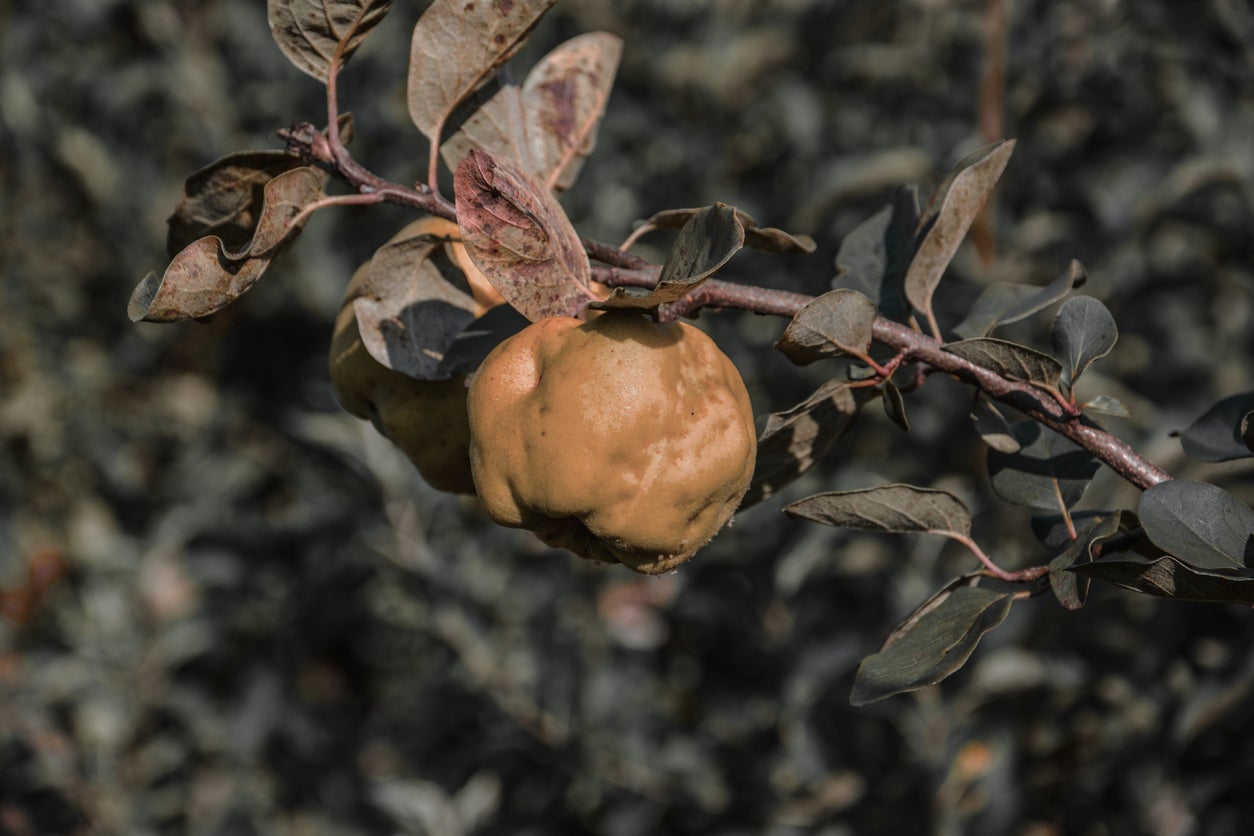Common Pests Of Quince Trees – Tips On Treating Quince Tree Pests


Growing quince trees can be incredibly rewarding. Not only do they produce fruit with a high pectin content that’s great for jellies and pies, their beautiful flowers and slightly messy form can turn an otherwise formal garden into a more casual getaway. You might not be alone when you’re out there in your hammock, though – quince tree pests could be lurking nearby as well. Although quince are sturdy plants, there are a few bugs that feed on quince, so it’s important you can tell friend from foe. Read on to learn more about pests on quince.
Pests of Quince Trees
Quince trees are fairly tough plants, but they’re also tasty, according to a wide range of insect pests. Most of the bugs you’ll encounter in the garden are fairly easy to control, especially if you catch them early. Check your plants often for insects by looking at the backsides of any leaves that look different and if you see any of these guys, break out the bigger guns: Aphids. These soft-bodied, sap-feeding insects multiply like rabbits and can damage fruit trees like quince by feeding on buds and causing flowers to distort or not emerge at all. The same feeding activity may cause twisted leaves and shoots. Aphids are easy to treat, however. Just knock them off the plant with a hard spray from the garden hose daily until the entire colony is gone. If ants are farming them, you’ll need to control the ants as well, since those pesky ants will give the aphids a boost back onto the quince if you give them a chance. Scale and mealybugs. Scale can appear in a range of guises, covered in a camouflage that’s often waxy or powdery. At first, you may think your plant has suddenly broken out in a disease, but if you slip a knife under the new growth, you’ll find a tiny insect huddling. Mealybugs are cousins to scale and look similar to the more powdery scale. They also shed wax, which tends to collect in twig crotches. Both can be dispatched with neem oil treatments and should be addressed as quickly as possible. Like aphids, they have a habit of multiplying quickly. Caterpillars. Caterpillars can be a problem for quince, especially leafrollers and codling moth caterpillars. Leafrollers are obvious from their rolled up leaf shelters, while codling moths are a bit sneakier. The first step is to establish what kind of caterpillar you have. Leafrollers tend to start by defoliating quince before damaging fruit, where codling moths head straight for fruit. With that established, you can apply spinosad either once for leafrollers, or three times, 10 days apart, for a first generation of codling moths. Removing damaged fruits and bagging undamaged fruits can help protect them from codling moths as well.
Sign up for the Gardening Know How newsletter today and receive a free copy of our e-book "How to Grow Delicious Tomatoes".

Kristi Waterworth was a regular contributor to Gardening Know How for many years, answering countless queries on plant pests and diseases.